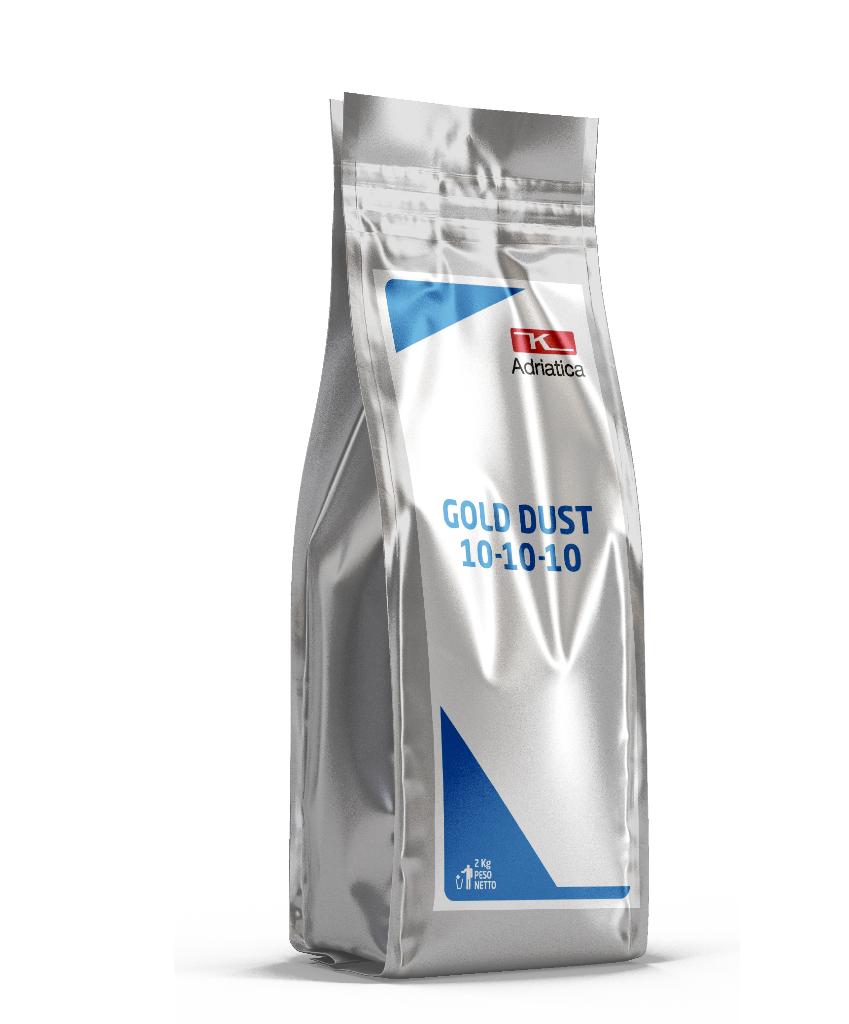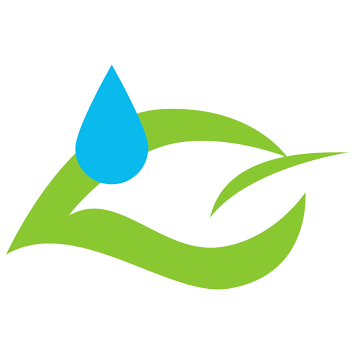

Packaging 2 Kg
PHYSIOLOGICAL ACTIVATORS
GOLD DUST 10-10-10
SUPPORTS CROP IN THE GROWTH PHASE
HELPS TO OVERCOME TRANSPLANTING STRESS
EXCELLENT IN CASE OF STRESS -RELATED GROWTH INTERRUPTIONS
GOLD DUST 10-10-10 is an organo-mineral NPK fertilizer characterized by a balanced ratio between the fertilizing elements. In its formulation the mineral fraction is combined with the organic one, derived from animal hydrolyzed epithelium, which makes it particularly effective in supporting crops in the first phase of their vegetative cycle. For this reason, GOLD DUST 10-10-10 is the ideal choice for fertilization of grapes and all fruit trees in the early phases and at the end (post-harvest) of the crop cycle. It is also ideal for fertilization of horticultural crops starting just after the transplanting. Furthermore, GOLD DUST 10-10-10 is usefully applied whenever crops face a growth disruption or delay due to adverse environmental conditions.
| Culture | Time of application | Dose/hectare* |
|---|---|---|
| Kiwifruit e Grapes | 2-3 applications from vegetative restart to fruit enlargement, every 10-15 days. Repeat 1-2 applications at post-harvest |
2-4 kg
|
| Olive e Citrus (Tangerine, Lemon, Clementine, Bergamot, Orange) | 2-3 applications from vegetative restart to fruit enlargement, every 10-15 days. Repeat 1-2 applications at post-harvest |
2-4 kg
|
| Stone fruits (Plum, Peach, Nectarine, Cherry, Apricot) e Pome fruits (Pear, Apple, Quince) | 2-3 applications from vegetative restart to fruit enlargement, every 10-15 days. Repeat 1-2 applications at post-harvest |
2-4 kg
|
| Strawberries | Post-transplanting, beginning of flowering, post-fruit set, fruit enlargement |
2-4 kg
|
| Fruiting vegetables (Pumpkin, Zucchini, Tomato, Pepper, Melon, Eggplant, Cucumber, Watermelon) | 3-4 applications from the beginning of flowering every 10-15 days. |
2-4 kg
|
| Leafy vegetables (Spinach, Celery, Escarole, Rocket, Radicchio, Lettuce, Chicory) | At early vegetative phases or whenever a prompt vegetative restart is required |
4 kg
|
| Industrial crops (Tobacco, Soybeans, Industrial tomato, Sunflower, Cotton, Rapeseed, Sugarcane, Beets) | At early vegetative phases in combination with post-emergence treatments, or whenever a prompt vegetative restart is required |
4 kg
|
| Flowers and ornamentals | At vegetative restart and after the summer stasis |
2-4 kg
|
| Nurseries e Seedbeds | 2-3 applications at the beginning of the crop cycle |
2 kg
|
-
Kiwifruit e Grapes2-4 kg2-3 applications from vegetative restart to fruit enlargement, every 10-15 days. Repeat 1-2 applications at post-harvest
-
Olive e Citrus (Tangerine, Lemon, Clementine, Bergamot, Orange)2-4 kg2-3 applications from vegetative restart to fruit enlargement, every 10-15 days. Repeat 1-2 applications at post-harvest
-
Stone fruits (Plum, Peach, Nectarine, Cherry, Apricot) e Pome fruits (Pear, Apple, Quince)2-4 kg2-3 applications from vegetative restart to fruit enlargement, every 10-15 days. Repeat 1-2 applications at post-harvest
-
Strawberries2-4 kgPost-transplanting, beginning of flowering, post-fruit set, fruit enlargement
-
Fruiting vegetables (Pumpkin, Zucchini, Tomato, Pepper, Melon, Eggplant, Cucumber, Watermelon)2-4 kg3-4 applications from the beginning of flowering every 10-15 days.
-
Leafy vegetables (Spinach, Celery, Escarole, Rocket, Radicchio, Lettuce, Chicory)4 kgAt early vegetative phases or whenever a prompt vegetative restart is required
-
Industrial crops (Tobacco, Soybeans, Industrial tomato, Sunflower, Cotton, Rapeseed, Sugarcane, Beets)4 kgAt early vegetative phases in combination with post-emergence treatments, or whenever a prompt vegetative restart is required
-
Flowers and ornamentals2-4 kgAt vegetative restart and after the summer stasis
-
Nurseries e Seedbeds2 kg2-3 applications at the beginning of the crop cycle
-
 Foliar fertilization
Foliar fertilization






